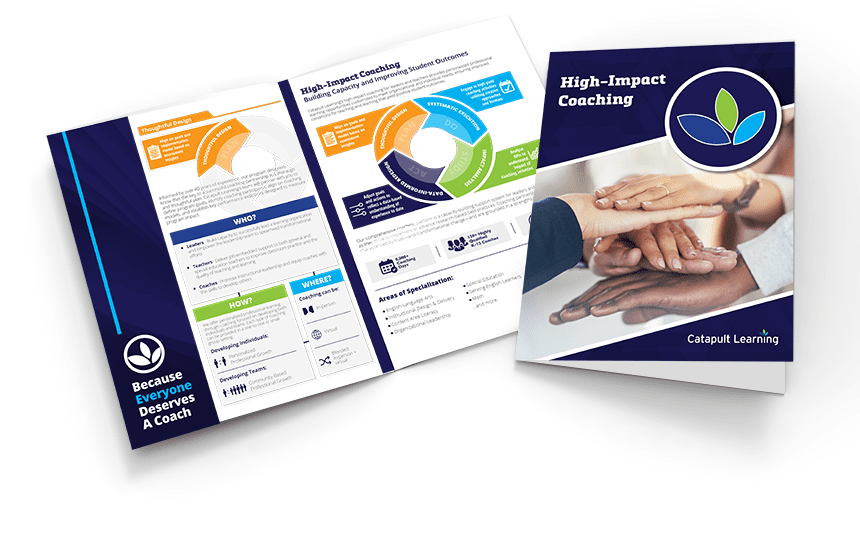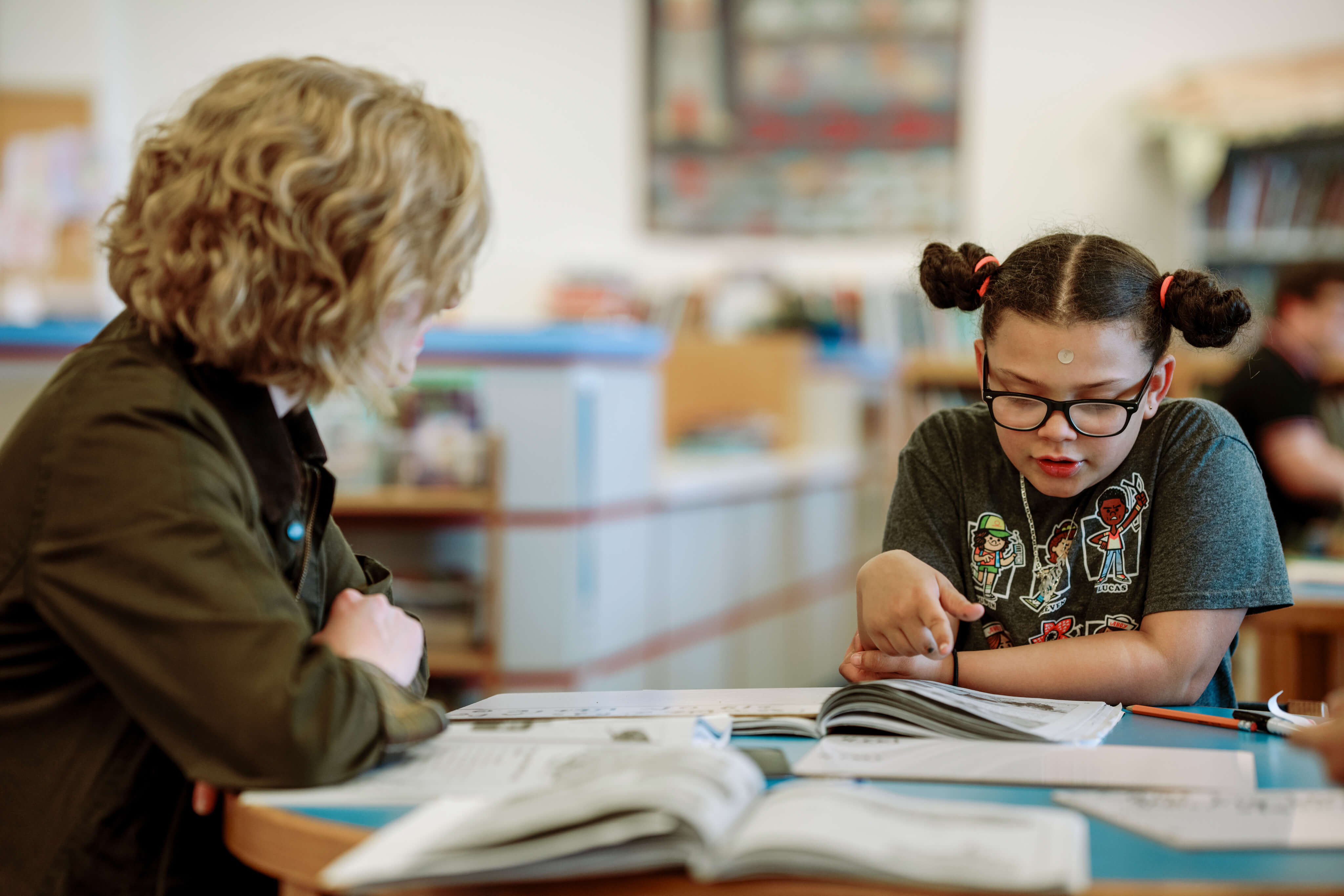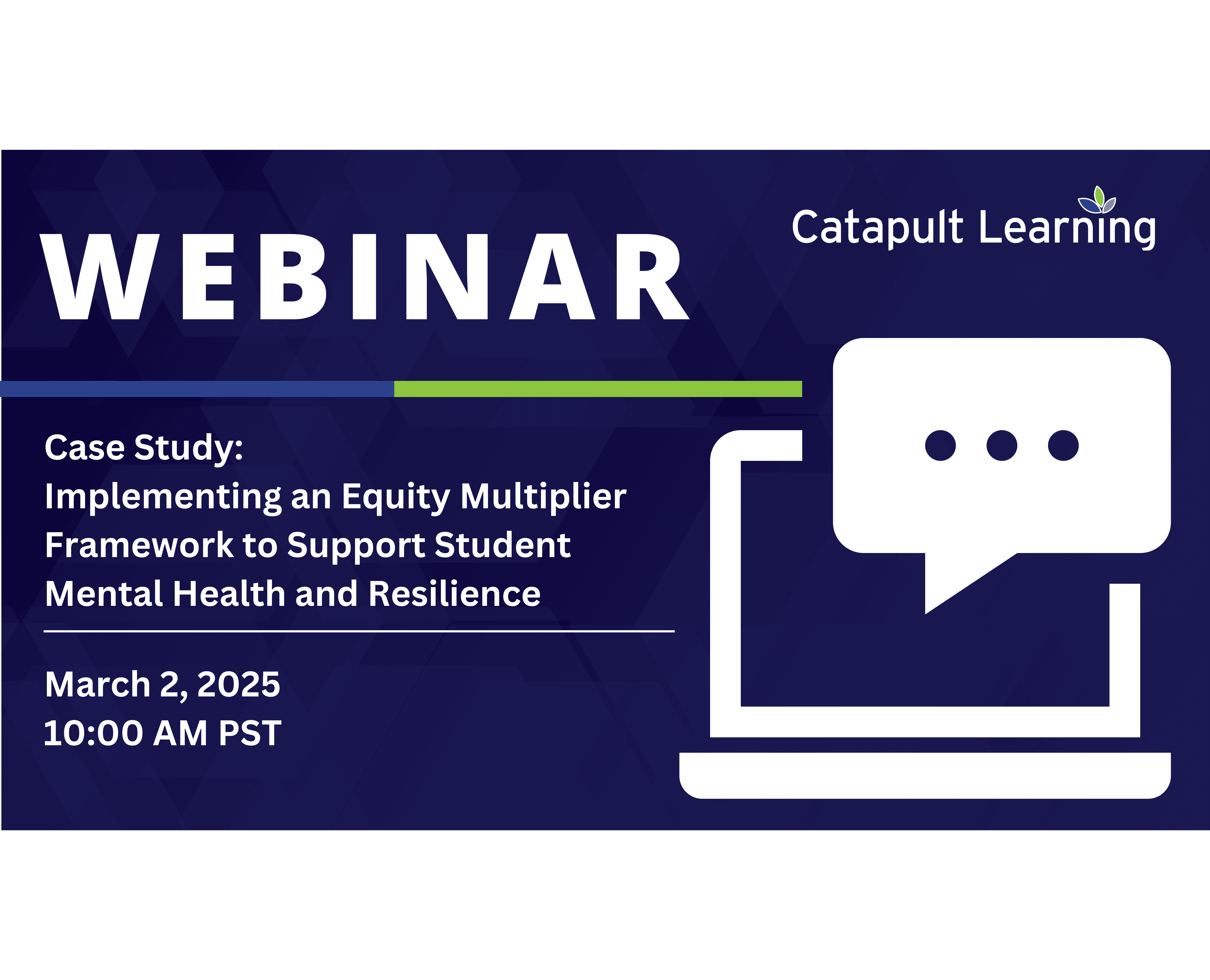Research consistently shows that teachers, particularly new teachers, who work with instructional coaches are more likely to remain with their schools.1,2 Many schools and districts continue to be challenged with hiring and retaining qualified teachers, making it important to employ strategies to both retain and develop teachers.
Coaches are increasingly being embraced by administrators and teachers who welcome the opportunity to learn from an experienced mentor. For maximum impact, coaches can employ a number of strategies in combination to keep instructors engaged throughout the coaching process.
Here are our Coaching Strategies for Teacher Success:
1. Build Relationships: To break down any walls, it is critical that coaches establish a relationship with his or her coachee as the first step in a partnership. This is particularly important for teachers who have resisted coaching in the past. Patience is required when building trust, not only through the coach’s credibility and knowledge, but also through shared experiences, complete transparency, and confidentiality. Only once a coach has built a foundation of trust and honesty can a coach-teacher relationship begin to form and thrive.
2. Goal Setting – Listen, Then Ask Questions: Being able to listen attentively is one of the most important traits a coach can possess. It is important at this stage to encourage the teacher to talk as the coach actively listens carefully for the need(s) the teacher may be expressing. Once this listening session is complete, coaches can then ask questions to elicit areas of concern, struggles, and success, to better inform the coaching plan.
One successful technique to employ is the “Miracle Question.” For example, “What would your classroom look and sound like if you were performing your best and had designed the perfect learning experience for your students?” Another effective technique is “scaling”, which poses the question of where the teacher thinks he or she is currently performing on a 1 to 10 scale. As a follow-up question, the coach might ask, “What steps can be taken to move the needle even just one number higher?” These strategies are especially productive as they “make opportunities for growth feel really tangible to our coaching partners,” Catapult Learning Vice President of Professional Development Susan Gerenstein says. “They also prompt practical, goal-oriented steps in the coaching partnership.”
A teacher’s strengths can also serve as a model for suggestions, as coaches are encouraged to use a strengths-based approach that builds upon success to accelerate an instructor’s professional growth. From there, coaches apply their keen understanding of adult self-directed learning models before moving onto a gradual release of responsibility.
Why? Because effective coaches understand how children learn and are adept in developing and implementing instructional strategies to improve student learning. These strategies rely on student data, classroom observations, and goals of the educator—all hallmarks of a superior instructional design.
3. Co-Plan: When a coach has extensive experience and familiarity with pedagogy, partnering with educators and bringing research-based best practices in lesson design to the table works well as they co-plan lessons with teachers. In fact, an overwhelming majority of research concludes that “coaches should be experienced teachers who have demonstrated success in the classroom.”3
Why? Because effective coaches thoroughly understand how children learn and are adept in developing and implementing instructional strategies to improve student learning. These strategies rely on student data, classroom observations, and goals of the educator—all hallmarks of a superior core instructional model.
4. Model: By collaborating with teachers, a coach has the capacity to demonstrate how to use a particular practice and can model specific instructional strategies in the classroom with examples of evidence-based best practices. Upon observing these strategies, the teacher is then better able to connect best practices to student success and implement those strategies into his or her daily lessons. Research has shown that modeling can support improvements in teachers’ academic practices and also supports improvements in learner academic outcomes.4
5. Observe: This illustrates the importance of a coach’s listening and observational abilities. Using this strategy, a coach closely watches a teacher in his or her learning environment, noting specific instructional strategies and student learning behaviors. Upon completion of classroom observation, the coach’s next step should be to collaborate with the teacher to dig deeper into the findings and observations, understanding the connections between the teacher’s practice and the students’ success, and determining growth opportunities that can be taught in subsequent sessions. It is also critical to take note of and communicate observed areas of strength as you form your feedback.
6. Offer the Right Kind of Feedback, Then Analyze and Reflect: When delivering data-based feedback to instructors, it is vital to acknowledge the teacher’s efforts with timely, positive, specific, and solution-oriented feedback5. A discussion regarding areas of opportunity will eventually occur, but it’s important to balance that type of feedback with positive feedback that coaches can deliver as evidence of success in the classroom and within the teacher’s instructional design.
7. Video-Enhanced Professional Learning: Video has proven to be an effective tool to advance professional learning. By watching a recorded lesson, teachers can observe their own practice which, when coupled with collaborative conversations between coach and teacher, offers a powerful loop for prompting reflection and feedback. A variety of coaching techniques can be employed with video—time-stamped feedback from the coach, a running dialogue based on the instructor’s perspective of the lesson, and strategies for advancing practice aligned to instructional frameworks.
As coaching and professional development have become increasingly integral to success in the classroom, Catapult Learning has formulated a well-articulated coaching model that can be utilized in any setting. Our comprehensive and collaborative coaching employs each of these strategies when partnering with educators, using relationship- and trust-building as the foundation.
Catapult places a strong emphasis on a candidate’s interpersonal skills when searching for the ideal coach. “The coaching relationship is one of collaboration,” says Gerenstein. “The coach plays a key role in fostering a true give-and-take partnership.” Once those collaborative relationships have been formed, the rest of the strategies fall into place throughout the course of the coaching partnership. Establishing comfort and trust allows the teacher to feel more open and at ease with his or her coach, ultimately leading to effective instruction and positive classroom outcomes.
Catapult Learning’s PD experts provide online, in-person, and job-embedded coaching. Download our high-impact coaching brochure to learn more.

Sources:
1,2 Linda Darling-Hammond, “Keeping Good Teachers: Why It Matters and What Leaders Can Do,” Educational Leadership 60, no. 8 (May 2003): 6-13
3 Kowal, J. and Steiner, L., September 2007. Issue Brief, Instructional Coaching. Washington, DC: The Center for Comprehensive School Reform and Improvement.
4 Biancarosa et al., 2010; Kim et al., 2011; Neuman & Cunningham, 2009; Neuman & Wright, 2010; for special education settings, see Barton et al., 2013; Bethune & Wood, 2013.
5 Scheeler et al., 2004; Solomon et al., 2012.



